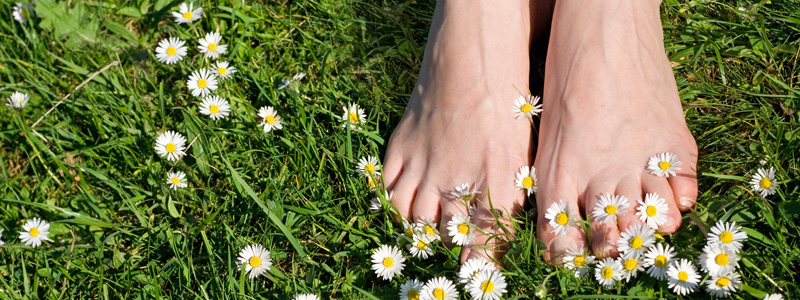
Our feet carry the entire weight of our body throughout the day, and yet we rarely take the time to pay them the requisite attention. Consequently, a number of conditions can affect the feet, many of which are easily treatable and preventable. We will look at some common health problems which occur at the level of the feet as well as some quick and simple everyday ways to care for those hard-working tootsies.
If you need a professional chiropodist or podiatrist, call us to book an appointment.
Skin-related problems
Dry and cracked heels
Dry and cracked heels can be seen on the heel directly but can also be indicated by flakey red patches, itching and/or bleeding. Cracks, or fissures in the heels occur mostly at the surface level but can become very painful if deepened beyond the level of the dermis. Heels that are dry are particularly prone to cracking when excessive pressure is applied to them because the heels feel like expanding sideways. Keep your heels well moisturised to help prevent cracking and treat fissures immediately when they occur to avoid infection.
Corns and calluses
Corns and calluses appear on the skin of the foot as dry, hardened and sometimes yellowed patches or bumps.They are the result of the bonier areas of the foot rubbing against your footwear. Corns and calluses can be painful and debilitating but they can be removed. Try to avoid wearing badly fitting shoes to minimise friction and pressure on the feet.
Structural problems
Ingrown toenails
Ingrown toenails are a common problem and occur when the toenail grows into the toe, breaking the skin. This can create pain in the toe and make simple activities such as walking and standing painful. A chiropodist can remove the ingrown part of the nail and instruct you how to cut your toenails to prevent future ingrowing nails.
Bunions
Bunions manifest as a swelling and soreness around the big toe joints and occur when the joints in the big toe become misaligned. Bunions can be very painful and there are a number of ways to reduce the pain, such as taping the foot, wearing specialised shoes and cushioning the area.
Fungal, Viral and Bacterial problems
Athlete’s foot
Our feet spend a large amount of time in socks and shoes, a dark, warm and humid environment that fungi strive from. Consequently, fungal growth on feet is a common issue, especially in cold climates like England, where feet don’t always get a chance to breathe and dry out regularly. Athlete’s foot is a fungal growth which often appears on the feet, in between the toes and causes itching, redness, dryness blisters and peeling. Athlete’s foot can be treated using anti-fungal cream but can take some time to be fully eradicated. To prevent it, wash and dry your feet thoroughly, change socks regularly and use shoes that breathe.
Warts
Warts are small bumps that develop singly or in clusters on the skin. They can be painful and contagious, as they are caused by viruses. Over-the-counter medication is not guaranteed to remove warts, but surgery, burning and freezing the wart off are available options.